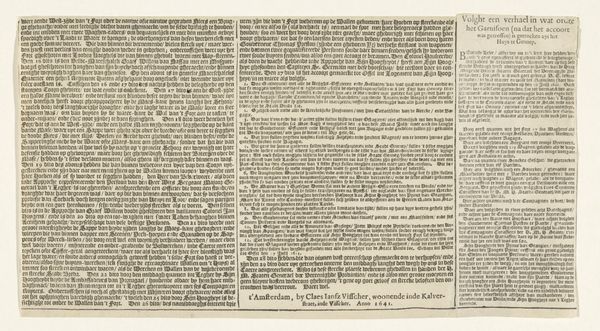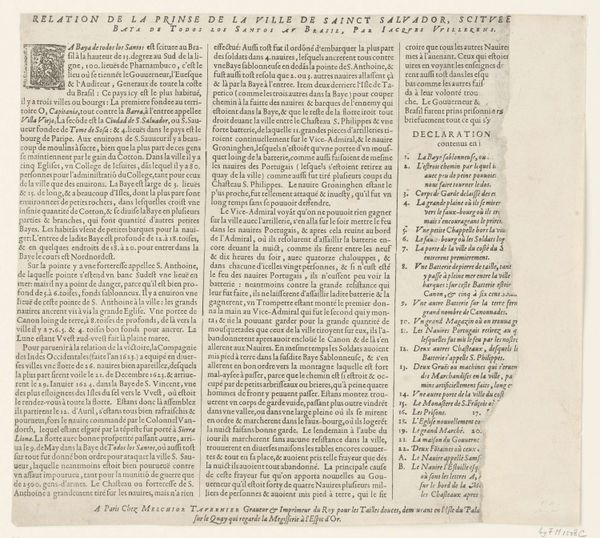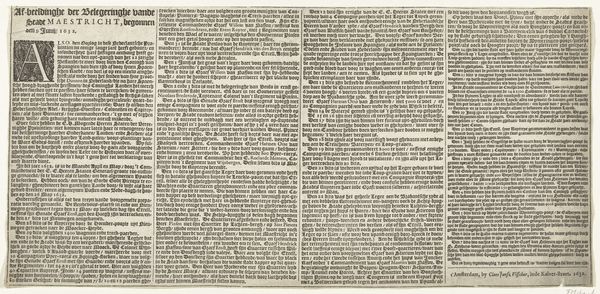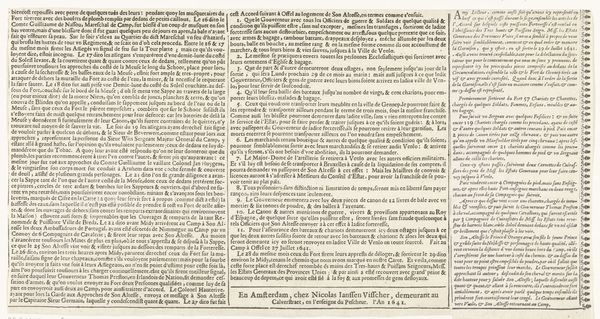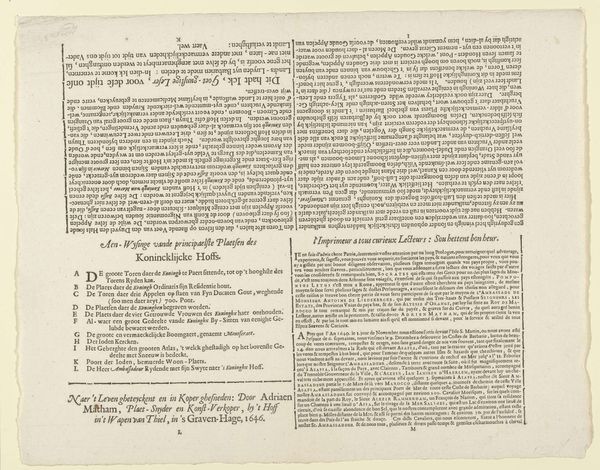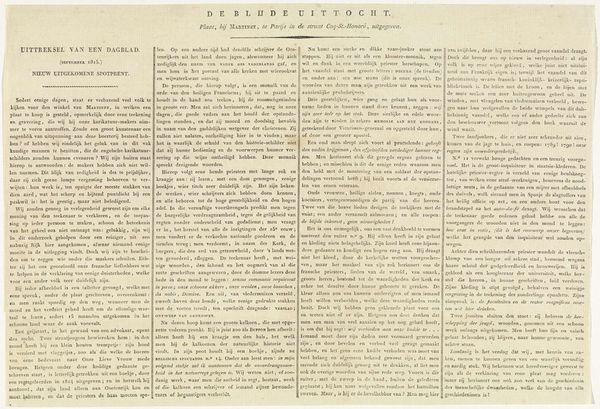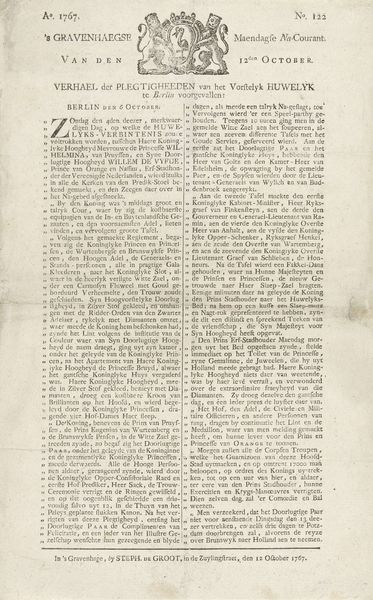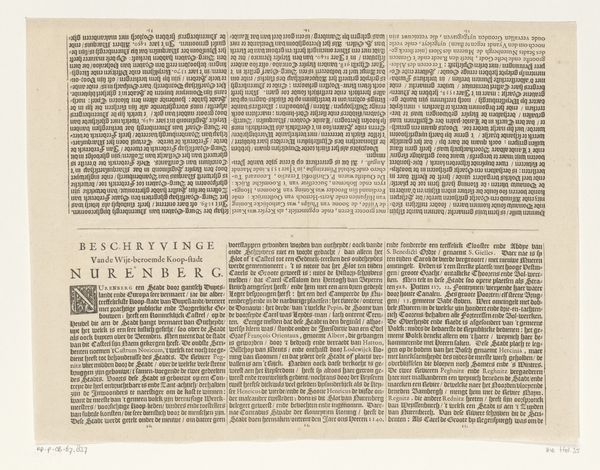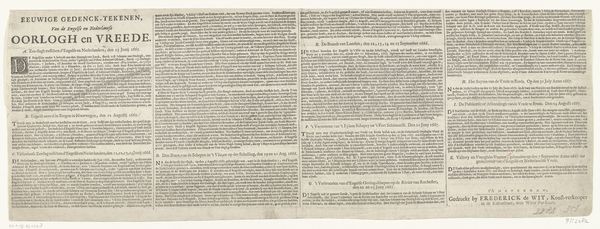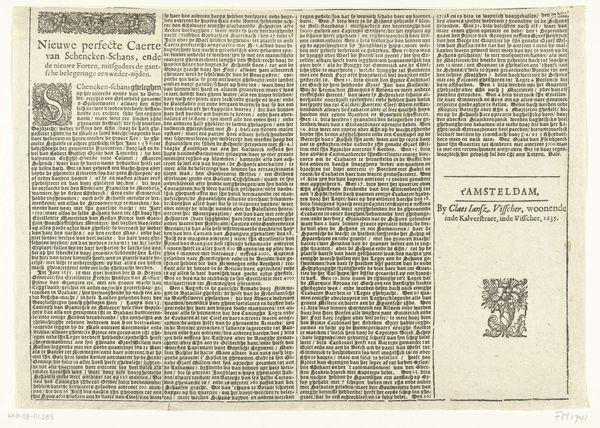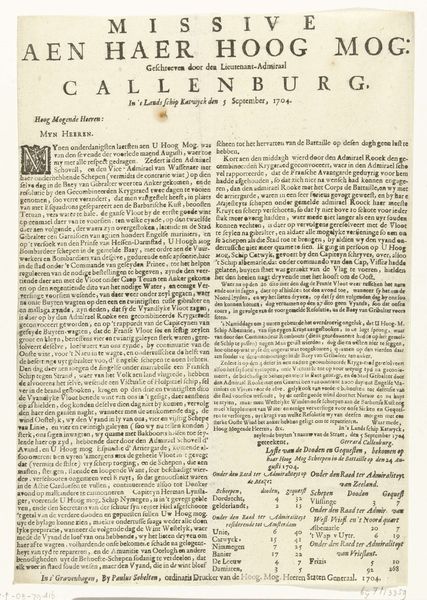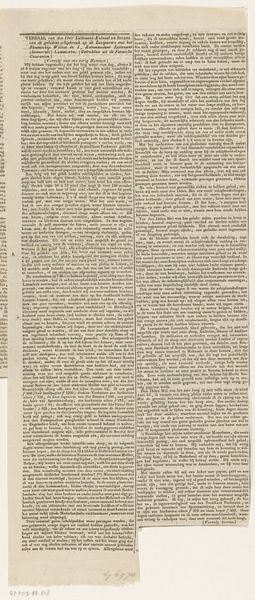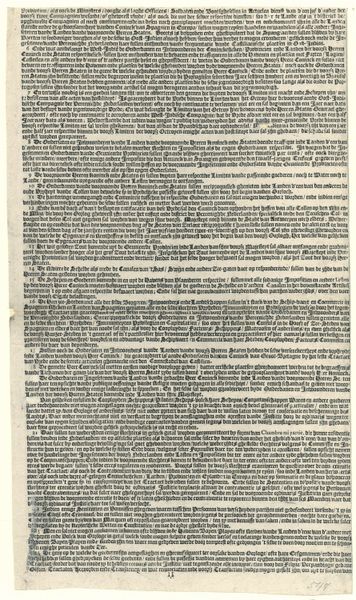
#
dutch-golden-age
# print
#
text
Dimensions: height 285 mm, width 380 mm
Copyright: Rijks Museum: Open Domain
Johannes Janssonius created this text sheet to accompany a view of Nuremberg around 1660, printed in Amsterdam. During this period, the Dutch Republic was a major center for cartography and publishing. Janssonius, as a prominent mapmaker and publisher, played a significant role in disseminating information about cities and regions across Europe. The text provides historical and topographical details about Nuremberg. Its content reflects the broader interest in urban centers and their importance for trade, culture, and politics. The choice of Latin and Dutch suggests a dual audience, both scholarly and vernacular. It reflects the complex linguistic and cultural landscape of the time. The inclusion of classical references and historical anecdotes would have appealed to educated elites. In contrast, the Dutch text made the information accessible to a wider readership. The Rijksmuseum's acquisition and preservation of this sheet underscore its significance as a historical document. Studying such texts allows us to understand the ways in which early modern Europeans perceived and represented their world. By examining the textual content, language, and intended audience, we can gain insights into the social and intellectual context of 17th-century Europe.
Comments
No comments
Be the first to comment and join the conversation on the ultimate creative platform.
